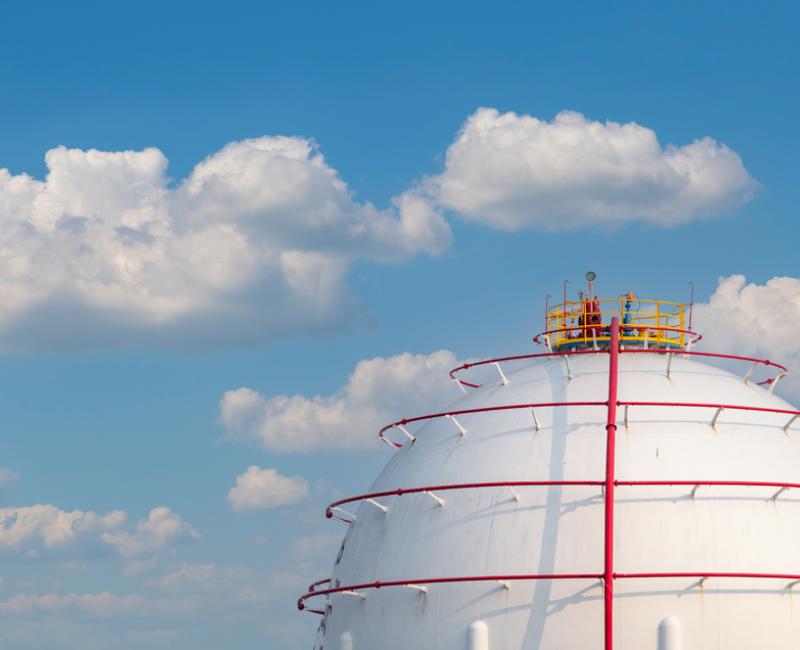ACER reports on national gas storage usage and regulations across the European Union
What is it about?
ACER’s report on national gas storage regulations provides an overview of the current national gas storage regulations. This report is relevant in the context of the current discussions on new policies for filling storages next winter.
The importance of gas storage
The European Commission’s REPowerEU communication (March 2022) highlights the need to be prepared for a possible interruption of gas supply. Gas storage plays an important role for ensuring continuity of gas supply. More recently, the Commission has tabled a legislative proposal introducing a minimum of 80% gas storage level obligation by 1 November for next winter, rising to 90% for the following years. EU leaders are expected to discuss and decide soon on the approach to refill Europe’s storage facilities.
The ACER report sets out the current storage situation across the EU and is based on information provided by its members, the national regulatory authorities (NRAs).
What are the main findings of the ACER gas storage report?
1. Facts on storage: the EU-27 storage capacity represents around 27% of the annual gas consumption of the European Union. 18 Member States have gas storage facilities. The remaining 9 Member States without storage represent less than 5% of the European annual gas consumption. More than 80% of the EU storage capacity consists of aquifers and depleted fields, which are primarily used for seasonal gas storage. The number and capacity of storage sites as well as the number of storage operators varies across the countries.
Type of storage regulation varies across Member States. 11 Member States have opted for regulated third-party access rules and regulated tariffs, while in 7 Member States, access to storage is negotiated between users and operators according to transparent and non-discriminatory rules. Slightly more than half of the gas storage capacity falls under a negotiated regime while the remaining falls under a regulated regime. NRAs have provided a description of national storage regulation, focusing on key regulatory aspects, roles and responsibilities.
2. Book and usage of storage: On 1st October 2021, the booked storage capacity in Austria, Germany, the Netherlands and Slovakia was significantly above actual used capacity due to low filling levels of storages used or controlled by Gazprom. Some Member States apply use-it-or-lose-it (UIOLI) rules to release booked but not used storage capacity; a measure that could be applied in all Member States.
3. Gas in storage obligations: 11 Member States have some type of storage obligations, including: capacity booking obligations, filling obligations for gas suppliers, strategic storage and regulatory limitations in the usage of storage under some conditions. In 7 Member States, there are no storage obligations at all.
4. Monitoring and compliance with storage obligations. Storage operators regularly monitor storage filling levels. For all regulated storages and most of non-regulated storages, monitoring data is regularly reported to authorities (Ministries, NRAs) and in some instances to oil and gas national stockpiling associations. When storage obligations are applicable, there are different models to address non-compliance: use-it-or-loose-it (UIOLI) regime whereby booked but not used storage capacity is offered on the secondary market, fines or a possibility to suspend licenses and contracts.
5. Different storage tariffs and capacity products. Different tariff and access to storage regimes coexist (11 Member States have regulated tariffs, 7 negotiated). The same applies to the availability of storage capacity products, which can range from a single standard bundled product to up to six different products. Ten Member States offer three or more types of capacity products. Storage tariffs are public in most of the cases.
6. Assessment of storage and national plans to establish storage obligations. NRAs have increased the vigilance over gas storage this past winter. The main current concern is the filling of gas storages for the upcoming winter. Member States with a regulated regime for storage (e.g. Belgium, France, Italy, Poland and Spain) have a positive assessment of their national systems and note an adequate storage filling level at the start of past winter season. Austria, the Netherlands and Germany have announced plans to consider establishing some type of storage obligations. The war in Ukraine has accelerated the discussions on revising or introducing strengthened gas storage regulations.
7. Validation of data provided by storage operators to ENTSOG and GIE AGSI+ Platform. Most NRAs report no or minor differences on the data provided by storage operators. As data is not always final and complete in the AGSI+ platform, it is recommendable to establish a more rapid process for validating the final storage values as well as an obligation of storage operators to report to AGSI+.
Would you like to find out more? Detailed country information is available in the report.



